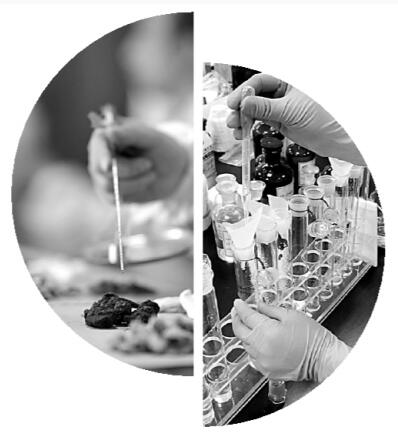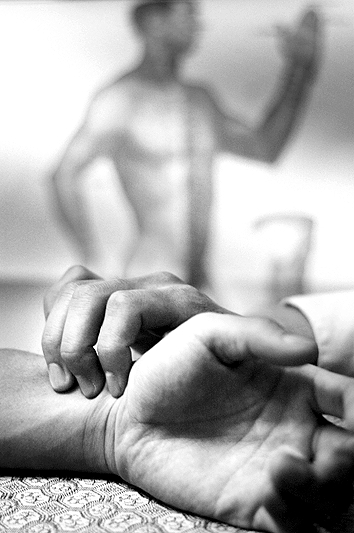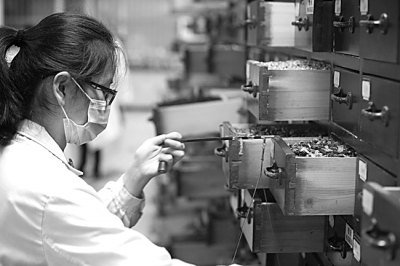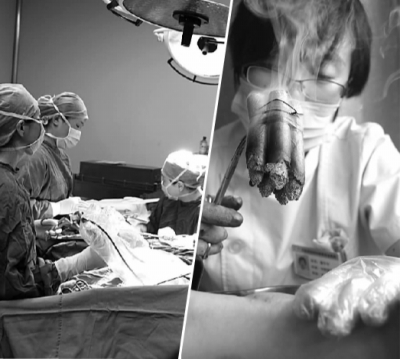On the scientific nature of traditional Chinese medicine and its modern innovation





introduction
Traditional Chinese medicine embodies the concept of "Heaven and Nature" in China’s philosophy, and "preventing diseases" and syndrome differentiation and treatment are its important contents. It not only attaches importance to the theoretical summary of clinical medical practice, but also emphasizes the guidance of theory to clinical diagnosis and treatment. The essence of his idea is holistic, concrete and dialectical, and it is also changing, updating and developing. The historical development process of traditional Chinese medicine itself is full of integration, interaction and coordination, and has experienced the mutual transformation, absorption and integration of multiple opposites.
In the past 300 years, western learning has spread to the east. Many people regard western scientism as the standard, thinking that China has "learning" but no science, and denying the scientific nature of Chinese medicine. Nowadays, the Law of Traditional Chinese Medicine has been formally implemented, and Chinese medicine and Chinese pharmacy are listed as the first-class disciplines of medical science in the subject catalogue of the Ministry of Science and Technology and the State Council Academic Degrees Committee. According to the usual discipline standards: there are chairs in higher education, teams and institutions in medicine, teaching, research and production, academic journals in various disciplines, and the discipline system of traditional Chinese medicine supported by national policies, approved by scientists and supported by the general public has also been completed. Nevertheless, some people still put forward the topic that Chinese medicine is useful but unscientific and does not have the factors of scientism. Thus, in the changing environment, it is really necessary to discuss how to recognize the scientific nature of traditional Chinese medicine and its modern innovation.
1, the integration of science and humanities
Medicine is a human study, and there is no distinction between Chinese and western medicine.
The theoretical system of traditional Chinese medicine is due to the yin-yang and five elements, the harmony between man and nature, and the accumulation of clinical experience and the theoretical guidance of syndrome differentiation and treatment. Therefore, TCM has the dual attributes of science and humanities.
Nowadays, medical science and technology have advanced, and the achievements of mathematical chemistry have promoted the progress of medical technology. In the last century, mankind made great achievements in the prevention and treatment of infectious diseases, and organ transplantation brought life extension … … … But the dilution and alienation of medical humanistic ethics has become a new problem. So is Chinese medicine.
The root of the contradiction between doctors and patients is that the conflict of interests has evolved into the relationship between buyers and sellers. Doctors and patients should be a "still one" community, but the reality is that the relationship between doctors and patients was once tense, and even medical injuries occurred frequently. Among them, the increasingly prominent ethical, legal and social problems have aroused the widespread concern of the medical community and all walks of life for medical humanities. Medical humanism is a kind of humanistic medicine, and its basis includes philosophy, literature, history, art, politics, economy, anthropology and so on. These humanities are of great value in medicine. They are the essential basic qualities for medical workers to serve patients, be cautious and make correct decisions, and also reflect the personality cultivation of medical staff. The birth of narrative medicine in this century is to ensure that when medical workers meet patients in any language environment and anywhere, they can fully understand, understand and respect the suffering of patients, and know how to pay attention to, listen to and establish a sense of belonging of patients.
Traditional Chinese Medicine (TCM) has a solid and profound accumulation of Chinese studies, especially the Confucian ideological connotation of "benevolence", "benevolence loves people", "courtesy belongs to people" and "people are ordered by heaven, taking benevolence from heaven and being benevolent". The "benevolence" here implies justice, freedom and strength; "Rite" means regulation, harmony and coordination in addition to ritual. The orientation of "heaven" should be the whole nature.
The Yellow Emperor’s Classic of Internal Medicine, Su Wen, consists of two parts, namely, the theory of five excesses and the theory of four defeats, which clearly states that the doctor’s fault is a precept, so that those who cure diseases for the people should be alert and cautious. Its concept respects and obeys the virtue of nature. Virtue is the use of Tao, and the master of life must be respected and obeyed. After the introduction of western learning, western medicine gradually occupied the mainstream position, and Chinese medicine practitioners failed to adhere to their own laws. No matter whether the illness needs it or not, all Chinese medicine and western medicine were added, and antibiotics were added in case of infection, while the prescription drugs for identification and legislation were gradually diluted, and more Chinese patent medicines were used instead of decoction for syndrome differentiation and treatment. As for adhering to the dual attributes of science and humanities, especially those who have read Notes on Thirteen Classics are rare. Humanistic philosophy has also faced the danger of dating for Chinese medicine scholars.
2. Interaction between image thinking and conceptual thinking.
Image thinking is put forward from the connotation and characteristics of China traditional culture, and it has been the mainstream of China people’s thinking mode for thousands of years. It has non-substantive characteristics and is the expression of the highest concepts of Chinese culture, such as Tao, Tai Chi, Nothing, Oneness and Self.
Images belong to different levels, such as original image, concrete image, representation and image. Recognizing the original image is a process of deepening the interpretation of "body", "view" and "enlightenment". In the past 300 years, western learning has spread to the east. With the development of modern science and technology, conceptual thinking and logical thinking have promoted human scientific and technological progress and social development, while the simplification and rigidity of reductionism have suppressed image thinking, making it unfamiliar and even forgotten.
Theoretically speaking, image thinking is non-conceptual thinking, but it is not mutually exclusive with conceptual thinking, and it is definitely not incompatible. In fact, when human beings solve problems, imagery thinking, especially imagery and conceptual thinking, are interactive. When it comes to the theory of Zangxiang, syndrome system and prescription potential of traditional Chinese medicine, there are also studies linking image thinking with concepts. Regarding the theory of Qi, Essence, Spirit and Meridian, many researches on psychology and endowment are inseparable from the thinking of the original image of Taixu. However, influenced by western centralism, the study of image thinking was almost completely ignored or avoided. Nowadays, under the background of attaching great importance to innovation, it is also the necessity of the times to rethink and try to revive the object thinking.
The original image is the high idea and realm of image thinking, the invisible image of the elephant mentioned by Lao Zi, the image of spirit and the image of returning to the mind and enlightenment. The original image of image thinking is not the "entity" of western metaphysics, but the image that is too empty. Its original image is not a vacuum but contains the spirit of neutralization, but the existence of "being born out of nothing", which is the image of original creation and the image of dynamic whole.
The rise of image thinking is related to the variation of the external world. Since the mid-19th century, scientific standards have gradually become the only standard to measure everything, excluding everything that cannot be conceptualized and formulated from "truth". It should be acknowledged that conceptualization and formulation are indispensable abstract forces for reductive analysis and are necessary for human beings to solve and grasp scientific problems. However, their abstraction itself also has the potential danger of simplification and rigidity. Therefore, it is impossible to grasp the whole of living organic changes of things simply by this way of thinking.
In contrast, the image thinking based on traditional Chinese medicine emphasizes the overall grasp of the changes between man and nature. For example, the clinical diagnosis and treatment procedure of traditional Chinese medicine is "observing the image" at first. Through seeing and hearing, smelling and touching the taste of the doctor, the tongue image, pulse condition and signs, disease image and medicinal materials are equal, starting from the image, focusing on the image, and identifying and treating diseases.
3. The change and innovation of discipline direction.
With the formation of "people-oriented" health concept, the subject direction of traditional Chinese medicine must be changed to adapt to the changes of the environment and serve the needs of great health, which is also the historical responsibility of contemporary Chinese medicine scholars.
Therefore, people should be placed between heaven and earth to see people’s health and diseases. Improve the framework of diagnosis and treatment system with holistic view and syndrome differentiation as the main body, obtain the curative effect of consensus evidence-based and narrative medicine, interpret and deepen the research of basic theoretical concepts, popularize the concept and method of "preventing disease", explore the transformation of research thinking from "reductive analysis" to "systematic research", strengthen the establishment of standardized standards of traditional Chinese medicine at home and abroad, and continuously enhance the international academic influence of traditional Chinese medicine.
There must be a clear understanding of the attributes of disciplines: first, under the guidance of big science, fully open up multi-disciplines to participate in academic research of traditional Chinese medicine, and at the same time pay attention to basic theoretical research, return to original thinking, and sort out the guiding role of philosophical principles in traditional Chinese medicine. Second, we should study the correlation of complex systems, dare to break through the boundaries of original disciplines and advocate integration. The third is to interpret, absorb and popularize scientific concepts in excellent cultures of different nationalities and regions.
In recent ten years, the author has been recognizing the changes in the direction of medicine. The new trend indicates that it is possible for Chinese and western medicine to move towards integration.
Traditional Chinese medicine education has been centered on clinical medicine, and its syndrome differentiation and treatment has original advantages and is consistent with individualized medicine. A multidisciplinary research team has been set up for the study of traditional Chinese medicine prescriptions, including not only Chinese and western medicine experts, but also experts in chemistry and physics. Traditional Chinese medicine prescription has the material basis of compatibility and combination of traditional Chinese medicine, and also reflects the therapeutic effect, which is the carrier of traditional Chinese medicine theory. The author puts forward that "the potential of prescription lies in the integration, and different compatibility of different decoction pieces, different components and different compounds has different effects. Explain the correlation between multi-components and multi-targets, and integrate confrontation, supplement and adjustment in view of holographic diseases and syndromes, so as to play a harmonious effect of synergism, attenuation and synergism". The integration effect includes the integration of drug substance and biological effect, the integration of drug entity and characterization information, and the integration of drug efficacy and human function.
Through experiments, it is realized that "network" can be regarded as a whole, which is the foundation and key technology of the system. For example, "network pharmacology" has various biological networks, such as gene regulation network, protein interaction network, information transmission network, metabolic network and phenotypic network, as the key to complex system analysis, which represents a new research concept and method in line with the overall characteristics of traditional Chinese medicine.
Chinese scholars’ research on compound network pharmacology, which is carried out in both Chinese and western countries, is basically in sync with the international situation, which is expected to make the research on traditional Chinese medicine prescriptions among the forefront of contemporary science and technology and provide strong support for source innovation. For example, China successfully prevented and controlled human and poultry influenza A for the first time. In the process of comprehensive integration and innovation, traditional Chinese medicine developed Jinhua Qinggan recipe based on syndrome differentiation and diagnosis of epidemic febrile diseases in Ming and Qing Dynasties, and used standard decoction, which achieved remarkable results in prevention and treatment. The paper was published in the American Yearbook of Internal Medicine, and the World Health Organization also suggested popularizing the experience of traditional Chinese medicine in preventing and treating human and poultry influenza A, which improved the international influence of traditional Chinese medicine.
At present, the general trend of medical development is to implement individualized medicine, preventive medicine, predictive medicine, translational medicine and participatory medicine. This provides a good opportunity for traditional Chinese medicine to play its original advantages. For example, TCM diagnosis and treatment starts from the whole. For the same disease, due to differences in genetic background, endowment and physique, and different syndromes, the dosage of the treatment prescription is also different. In the medical model, it is emphasized that physiology and psychology should adapt to the changes of nature and social environment, which embodies the characteristics of individualized medicine. The idea of preventing diseases before they happen and preventing changes after they happen, and the promotion of various TCM health care methods have practiced the true meaning of preventive medicine. Traditional Chinese medicine, represented by the theory of five movements and six qi, actively identifies the physical health status and evolution trend and adapts to the changes of various climates and phenological environments, which is emphasized by modern medicine, with emphasis on early monitoring before illness.
As one of the key changes, translational medicine can highlight the advantages of traditional Chinese medicine. Traditional Chinese medicine stresses translational medicine, which is to condense scientific problems from clinical practice, then do basic research and development research of new compound prescription, and turn basic scientific research achievements into clinical application, thus improving the level of maintaining health and preventing diseases. Therefore, the research mode of translational medicine must be the close cooperation of multidisciplinary consortia, the transformation of hospitals into pre-hospital communities and towns, the transformation of mature technologies into industrial research and development, the transformation of scientific and technological achievements into benefits for people’s livelihood, and the transformation of grass-roots medical teaching and research production into talent training.
Can today’s traditional Chinese medicine and western medicine develop in the direction of convergence with complementary interaction, and can they lay the foundation for building a unified new medicine?
Western medicine, which was born on the basis of western industrial civilization, once focused on the "disease" of patients for a period of time, pursued biological indicators, emphasized technology and demonstration, and emphasized that it must be repeatable and reproducible. In the 20th century, reductionism prevailed, which had certain positive significance for medical progress, but in the long run, it was suspected of putting the cart before the horse. However, the diagnosis and treatment goal of TCM focuses on the patient’s "person". As a whole system medicine, TCM has clear internal standards, such as "Qi and pulse are always normal", "Concentrate on essence and concentrate on mind" and "Yin and Ping Yang are secret". In terms of specific intervention methods, Chinese medicine emphasizes moderation in diet, focusing on yin and yang, and advocates that everyone take the initiative to participate in the whole process of recognizing their own health and maintaining health, so as to keep healthy qi inside and prevent evil from doing. This also coincides with the concept of modern health management.
Therefore, when we promote translational medicine and use network medicine as the focus of adjustment and reform, it is possible for us to fully understand the essence of reductionism and system theory in the process of modern difficult-to-treat diagnosis and treatment in the face of multi-factor, multi-variable and multi-tissue and organ complexity, and to integrate the basics of traditional Chinese medicine and western medicine and then generate new innovations.
(Author: Wang Yongyan, an academician of China Academy of Engineering and a librarian of the Central Museum of Literature and History)